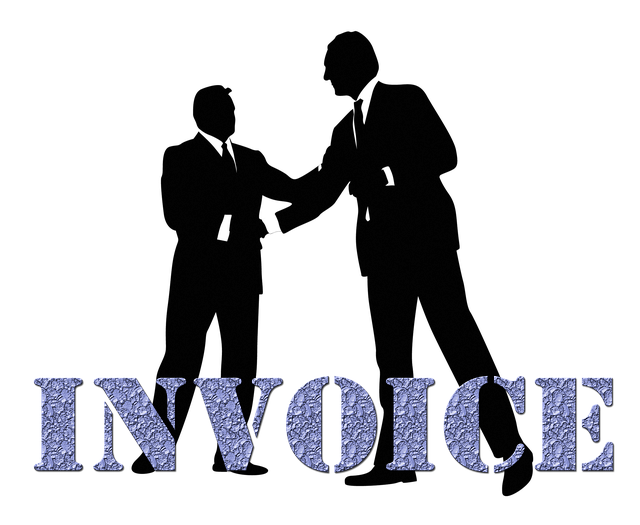Whole Ledger Factoring is a financial strategy empowering businesses with enhanced control over their cash flow. By analyzing every transaction in the ledger, it offers an all-encompassing view of financial health, enabling data-driven decisions and navigating economic shifts. This method instantly funds companies by converting accounts receivable into capital, supporting operational continuity, fostering growth, and revolutionizing cash management. It's a powerful tool for both startups and established enterprises, optimizing financial processes and resource allocation in competitive markets. Through factoring, businesses can prioritize core operations, innovate, expand, and maintain competitiveness.
In today’s dynamic business landscape, efficient cash flow management is paramount for success. Explore the transformative power of Whole Ledger Factoring—a revolutionary approach to unlocking comprehensive cash flow. This comprehensive guide delves into the intricate workings and significant benefits of this financial strategy. From enhancing business cash management to streamlining operations, learn how factoring can propel your enterprise forward. Discover practical insights, real-world case studies, and expert tips for successfully implementing this game-changing solution.
- Understanding Whole Ledger Factoring: Unlocking Comprehensive Cash Flow
- The Role of Factoring in Business Cash Management
- Benefits of Whole Ledger Factoring for Businesses
- How Does It Work? A Step-by-Step Guide
- Case Studies: Real-World Success Stories
- Implementing Whole Ledger Factoring: Tips and Best Practices
Understanding Whole Ledger Factoring: Unlocking Comprehensive Cash Flow

Whole Ledger Factoring is a powerful financial strategy that empowers businesses to unlock their full potential in terms of cash flow management. By delving into this method, companies can gain access to an extensive view of their financial landscape, enabling them to make informed decisions and navigate through economic challenges with ease. This innovative approach goes beyond traditional factoring by examining the entire ledger, providing a comprehensive understanding of every transaction and its impact on cash flow.
In the realm of business cash management, this strategy is a game-changer. It allows businesses to access immediate funding by selling their accounts receivable at a discount, ensuring they have the resources needed for day-to-day operations and future growth. With whole ledger factoring, companies can transform their financial data into a valuable asset, fostering stability and opportunities for expansion in today’s dynamic market.
The Role of Factoring in Business Cash Management

In the dynamic landscape of modern business, effective cash flow management is paramount for survival and growth. Whole ledger factoring emerges as a robust strategy within the broader realm of business cash management. By converting accounts receivable into immediate liquidity, factoring provides businesses with a steady stream of funds, enabling them to navigate financial peaks and valleys with ease. This practice not only enhances operational flexibility but also reduces the administrative burden associated with managing accounts receivable.
Factoring plays a pivotal role in optimising business cash management by providing quick access to capital. It allows companies to focus on core operations, fostering innovation and expansion. Moreover, factoring offers a scalable solution, catering to businesses of all sizes, from startups to established enterprises. By leveraging the power of factoring, firms can streamline their financial processes, ensuring optimal resource allocation and sustained competitiveness in today’s fast-paced market.
Benefits of Whole Ledger Factoring for Businesses

Whole Ledger Factoring offers a game-changing solution for businesses seeking enhanced cash flow and improved financial health. By providing a comprehensive view of their financial landscape, this method allows companies to unlock significant benefits. It enables efficient business cash management by streamlining accounts receivable, ensuring funds are readily available to support operational needs and strategic growth initiatives.
This approach revolutionizes traditional factoring practices, moving beyond individual invoices. It considers the entire ledger, offering a holistic view of a company’s financial position. This includes a detailed analysis of sales, purchases, and expenses, providing valuable insights for better decision-making. As a result, businesses can optimize their cash flow management, reduce costs associated with late payments, and gain a competitive edge in today’s fast-paced market.
How Does It Work? A Step-by-Step Guide

Whole ledger factoring is a powerful tool for businesses looking to optimize their cash flow and enhance overall financial management. Here’s how it works, broken down into simple steps:
1. Factoring Process Initiation: Businesses begin by selling their accounts receivable (invoices) to a factor, which is typically a third-party financing company. This involves agreeing on terms, including the discount rate and payment terms for the invoices. The factor then advances the business the majority of the invoice amount immediately, providing quick access to cash.
2. Collection and Payment Management: Once sold, the factor manages the collection process by pursuing payment from the customers. Upon receipt of payment, the factor will remit the remaining balance to the business, deducting only the agreed-upon discount fee. This step streamlines the accounts receivable management process for businesses, eliminating the need for internal collection efforts.
Through this method, businesses can gain better control over their cash flow by receiving funds faster and offloading the responsibility of collections. It’s an effective strategy for business cash management, enabling companies to focus on core operations while ensuring a steady financial influx.
Case Studies: Real-World Success Stories

In the realm of business cash management, whole ledger factoring has emerged as a game-changer for many companies seeking comprehensive solutions to enhance their cash flow. This innovative approach, often hailed as a success story in itself, has been instrumental in transforming the financial landscape for numerous businesses across various industries. From small enterprises to large corporations, real-world case studies paint a compelling picture of its effectiveness.
For instance, consider a manufacturing firm struggling with slow-paying clients and limited working capital. Implementing whole ledger factoring allowed them to free up funds tied up in invoices, enabling them to cover immediate expenses, reinvest in operations, and even explore new business opportunities. Another success story involves a retail business that experienced seasonal cash flow variations, leading to challenges in meeting vendor obligations. Factoring provided the necessary liquidity during peak seasons, ensuring they could maintain strong relationships with suppliers and continue offering quality products to their customers. These examples illustrate how whole ledger factoring can serve as a powerful tool for businesses aiming to optimize their financial health and overall business performance.
Implementing Whole Ledger Factoring: Tips and Best Practices

Implementing Whole Ledger Factoring requires a strategic approach for optimal business cash management. First, organizations should thoroughly review their accounts receivable and ensure accuracy in recording all transactions. This involves double-checking invoices, payment records, and any adjustments to maintain a clear picture of outstanding balances. Next, choose a reputable factoring company that aligns with your industry and offers transparent terms. Negotiate rates and set clear expectations for both parties.
Best practices include establishing regular communication with the factoring provider to track cash flow and address any issues promptly. Automate payment processes where possible to streamline operations and reduce manual errors. Regularly review and analyze financial statements to gain insights into trends, identify areas for improvement, and make data-driven decisions. Remember, successful Whole Ledger Factoring contributes to enhanced business cash management by providing quicker access to funds and allowing companies to focus on growth opportunities.
